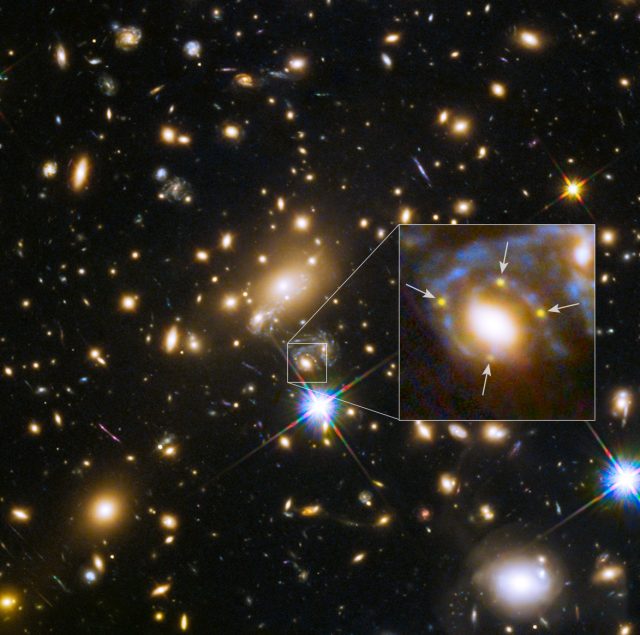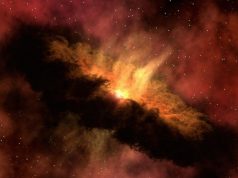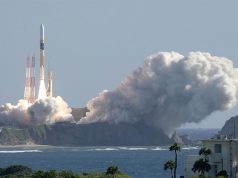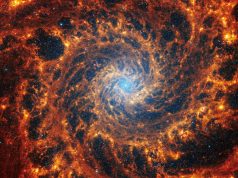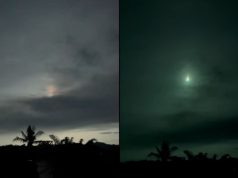WASHINGTON | Multiple images from a class of supernovas called Type Ia, often referred as “standard candles” because of their well-known intrinsic brightness, have been detected for the first time, an international team of astronomers said Thursday.
The exploding star, dubbed iPTF16geu, appeared in four different locations on the sky, thanks to a galaxy in front of it that’s acting as a “cosmic lens,” according to the study published in the U.S. journal Science.
Such a phenomenon occurs when the gravity of a massive object, like a galaxy, bends the light of a more distant object. The effect can cause galaxies to appear strangely twisted, and even produce multiple images of the same object.
While this phenomenon of gravitational lensing has been observed many times since the early 20th century, when it first was predicted by Albert Einstein, imaging a lensed Type Ia supernova has proven formidably difficult, until now.
Type Ia supernovae are abundant and frequently used by astronomers to accurately measure distances in the universe, since they explode in a very predictable and consistent manner.
“Resolving, for the first time, multiple images of a strongly lensed ‘standard candle’ supernova is a major breakthrough,” Ariel Goobar, a professor with the Oskar Klein Center at the Stockholm University, Sweden, and a lead author of the study, said in a statement.
Goobar and his group are partners in two international scientific collaborations — iPTF (intermediate Palomar Transient Factory) and GROWTH (Global Relay of Observatories Watching Transients Happen), led by the California Institute of Technology.
Using several ground-based telescopes and the Hubble Space Telescope, the team revealed that the supernova was four billion light years away and that the galaxy that was acting as a gravitational lens located about two billion light years away.
Apart from producing a striking visual effect, capturing the images of the strongly lensed Type Ia supernova such as iPTF16geu is extremely useful scientifically.
Astronomers can now measure very accurately how much time it takes for the light from each of the multiple images of the supernova to reach us.
The difference in the time of arrival can then be used to estimate with a high precision the expansion rate of the universe known as the Hubble constant.
Currently, the different methods to measure the Hubble constant produce slightly different results but even these small changes can result in significantly different scenarios for the predicted evolution and expansion of the universe.
For this study, the team calculated that the lensing matter in the galaxy magnifying iPTF16geu has a mass up to 10 billion times that of the sun and a radius of nearly 3,000 light-years.
Compared to other lensing objects, this is relatively tiny, they said, noting that studies of unusual lensed objects like this will give astronomers a new peek into gravitational lensing and may redefine what we know about the factors, such as dark matter and Einstein’s general theory of relativity.
“The discovery of iPTF16geu is truly like finding a somewhat weird needle in a haystack,” said Rahman Amanullah, a postdoctoral fellow at Stockholm University and a co-author on the study. “It reveals to us a bit more about the universe, but mostly triggers a wealth of new scientific questions.”

